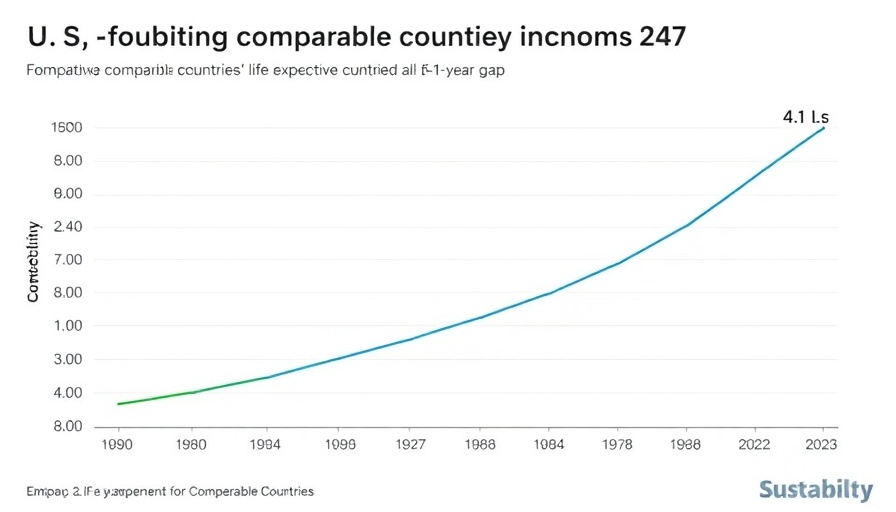
The Reality of U.S. Life Expectancy
Life expectancy can be a crucial factor in retirement planning, affecting everything from savings strategies to healthcare needs. Recent data shows that between 2019 and 2022, the United States faced a significant decline in life expectancy, exacerbated by the COVID-19 pandemic. Although estimates suggest that U.S. life expectancy returned to pre-pandemic levels in 2023, it still trails behind many other high-income countries.
Comparing U.S. Life Expectancy with Peers
The comparison includes countries like Australia, Canada, Germany, and Japan, which have successfully maintained higher life expectancy rates. These countries approach health outcomes through various effective healthcare systems and policies that many U.S. citizens can learn from when planning their own futures.
Factors Contributing to Life Expectancy Disparities
Several determinants come into play when understanding the differences in life expectancy across nations. Key factors include access to healthcare, lifestyle choices, socioeconomic status, and public health initiatives that other nations have prioritized. Understanding these nuances can guide seniors and those planning for retirement in navigating their healthcare options effectively.
The Long-Term Implications for Retirement Planning
As life expectancy continues to evolve, it’s essential for individuals approaching retirement to consider how their needs may change. Longer life expectancy may require more retirement savings, comprehensive health insurance, and a focus on long-term wellness strategies. Those in retirement planning should stay informed about these trends to make sound decisions that will support their well-being in later years.
 Add Row
Add Row  Add
Add 




Write A Comment